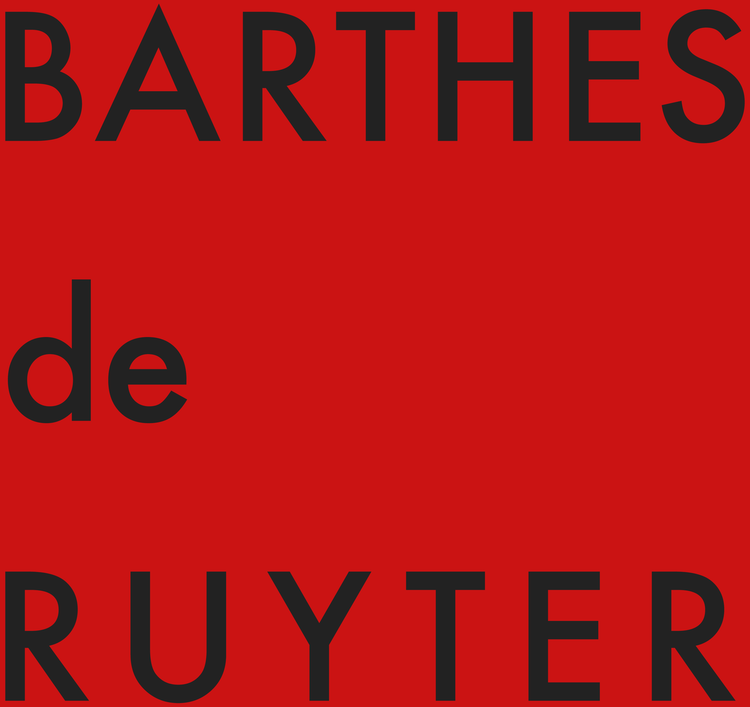Barthes de Ruyter
texte (aussi traduit en anglais) paru dans le catalogue du 58éme Salon de Montouge commissaire artistique Séphane Corréard
par Augustin Besnier critique d’art et membre du collège critique du salon de montrouge
Approchez-vous d’une gravure de Dürer, plongez-y le regard, dissipez les figures et parvenez jusqu’au détail, vous y verrez l’infiniment petit devenir monde. C’est cette expérience que les encres de Barthes de Ruyter ravivent. Leur affinité avec la gravure est d’ailleurs manifeste : travail à la pointe, minutie d’orfèvre et nuances de gris leur confèrent cette facture ouvragée qui célèbre tant la technique que l’humain.
La dissection n’est plus au programme des beaux-arts, et l’artiste le regrette presque. Examiner l’homme au-dedans pour mieux en peindre le dehors n’est pas d’actualité, mais l’infiniment petit qui est en nous, et que les maîtres d’antan n’observaient pas, ouvrirait une voie vers le vivant que peu d’artistes ont jusqu’ici explorée.
C’est en l’empruntant que Barthes de Ruyter synthétise presque – au sens biologique du terme – les thèmes universels de la peinture et de la littérature en physique quantique. Moins par scientisme que par fascination pour les rapports de masses, de forces et d’actions que la mythologie décrit autant que la microbiologie les observe, il visite les récits légendaires comme on sonde les tissus organiques.Une Désintégration d’une cellule et sa multiplication deviennent pour lui aussi évocatrices que la décollation de Iokanaan chez Wilde, et les combats des héros homériques aussi élémentaires qu’un duel de bactéries.
La coïncidence du spectaculaire avec l’infime apparaît très tôt dans son parcours. Formé aux métiers de la scénographie et du «design for performance» au Central Saint Martins, il travaille d’abord à la création de décors et de costumes, oeuvrant de fait dans la maquette et le croquis. Un besoin d’autonomie et de liberté le pousse alors à travailler en solitaire et à créer son propre monde à l’échelle de sa plume. Ce n’est qu’en 2009 qu’il se consacre ainsi au dessin, longtemps pratiqué sous forme de storyboards et de planches, rarement au service de lui-même.
D’abord hésitant sur le support et le format, il opte rapidement pour le carton vertical, propice au diptyque et à la série. Si la scène n’est plus envisagée, l’attachement au récit reste intact : la peinture en épisodes traverse les époques et resurgit chez lui dans un Duel aux portes Scées, série magistrale de neuf diptyques retraçant le combat d’Hector et d’Achille, où l’influence d’Uccello se mêle à la mise en image d'un big bang.
Retenir l’explosion par la minutie du tracé, coucher le chaos sur papier millimétré : c’est la raison de la démesure et la démesure de la raison qui sont à l’oeuvre chez Barthes de Ruyter. Lui qui fabriquait en petit ce qui devait habiter l’espace déploie désormais le processus : entre observations de corps au microscope et de galaxies au télescope, ses oeuvres plongent dans l’infime pour explorer l’infini.
texte en anglais
Move close to a print by Dürer, delve in with your eyes, dispel the figures and go into the details, there you will see the infinitely small become a world. It is this experience that the ink drawings of Barthes de Ruyter revive. Their affinity with engraving is moreover obvious: working with a point, the minutiae of a goldsmith and nuances of grey give them their carefully crafted manner which celebrates the technique as much as it does the human being.
Dissection is no longer on the syllabus for fine art, and the artist almost regrets this. To examine man on the inside in order to better paint the outside is no longer topical, but the infinitely small that is within us and that the masters of yesteryear did not observe, would open a new way towards the living that few artists have explored to date.
It is in borrowing this that Barthes de Ruyter almost synthesizes – using the biological meaning of the word – the universal themes of painting and literature in quantum physics. Less by scientism than by fascination for the relationships of masses, forces and actions that mythology describes as much as microbiology observes them, he revisits the legends like we analyse organic tissue. A Disintegration of a cell and its multiplication becomes for him just as evocative as the beheading of Iokanaan in Wilde, and the combats of Homeric heroes as elementary as a duel of bacteria.
The coincidence of the spectacular with the infinitesimal appears very early in his career. Trained in the crafts of set design and“design for performance” at Central Saint Martins, he worked first on the creation of décors and costumes, developing in fact models and sketches. A need for independence and freedom pushed him to be employed independently and to create his own world at the scale of his pen. It was only in 2009 that he thus devoted himself to drawing, long practiced in the form of storyboards and sheets, rarely for himself.
First hesitating about the format and the medium, he quickly opted for a vertical card, better suited to diptychs and series. Although sets are no longer envisaged, the attachment to narrative remains intact: painting in episodes travels through time and reappears in him in Duel aux portes Scées / Duel to the Scaean Gates, a masterly series of nine diptychs depicting the combat of Hector and Achilles where the influence of Uccello is combined with an imagining of the Big Bang.
Retaining the explosion with the minutiae of line, placing chaos on graph paper: this is the reason for the excess or the excess of reason that live in Barthes de Ruyter. He who made on a small scale that which would occupy space now deploys the process: between observations of bodies under a microscope and galaxies in a telescope, his works dive into the infinitesimal to explore the infinite .
